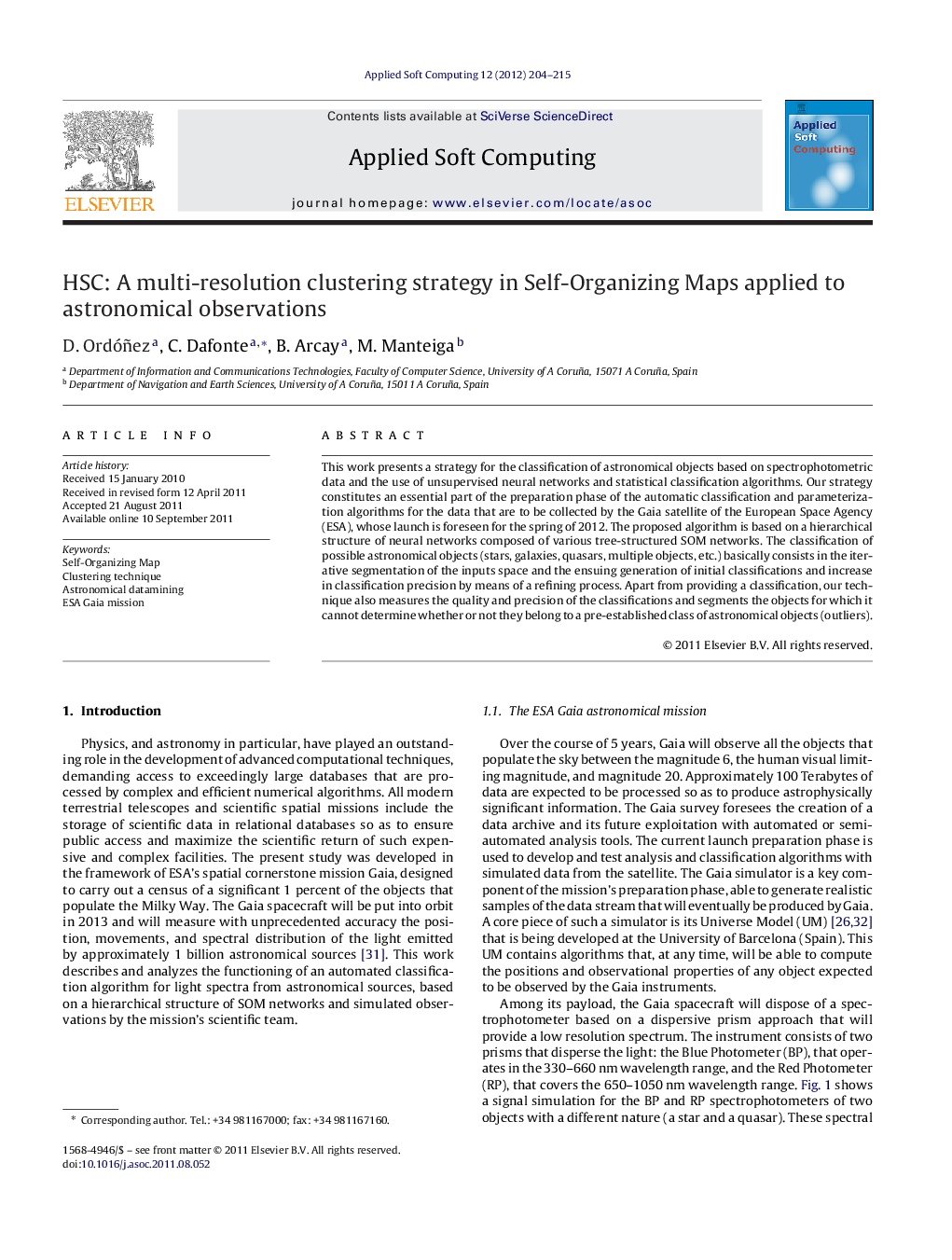| Article ID | Journal | Published Year | Pages | File Type |
|---|---|---|---|---|
| 496168 | Applied Soft Computing | 2012 | 12 Pages |
This work presents a strategy for the classification of astronomical objects based on spectrophotometric data and the use of unsupervised neural networks and statistical classification algorithms. Our strategy constitutes an essential part of the preparation phase of the automatic classification and parameterization algorithms for the data that are to be collected by the Gaia satellite of the European Space Agency (ESA), whose launch is foreseen for the spring of 2012. The proposed algorithm is based on a hierarchical structure of neural networks composed of various tree-structured SOM networks. The classification of possible astronomical objects (stars, galaxies, quasars, multiple objects, etc.) basically consists in the iterative segmentation of the inputs space and the ensuing generation of initial classifications and increase in classification precision by means of a refining process. Apart from providing a classification, our technique also measures the quality and precision of the classifications and segments the objects for which it cannot determine whether or not they belong to a pre-established class of astronomical objects (outliers).
► This work presents a methodology for the classification of astronomical objects in the context of ESA's astronomical survey Gaia. ► We propose an ANN method that is based on SOM and uses weight vectors to perform the classification. ► It iteratively segments and isolates the different astronomical object types: stars, galaxies, etc. ► We apply cluster labelling to add information about concrete object types hidden by each group. ► HSC minimizes the error rates and provides criteria to judge the reliability of the classification.
